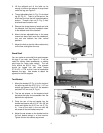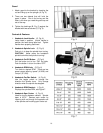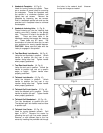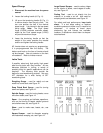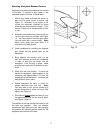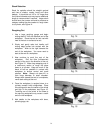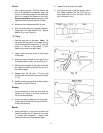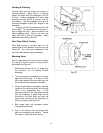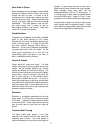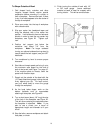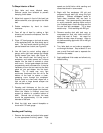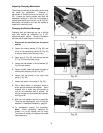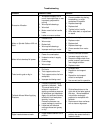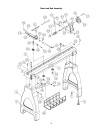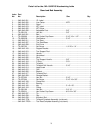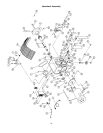17
Face Plate or Chuck
While faceplates are the simplest, most reliable
method of holding a block of wood for turning,
chucks can also be used. A chuck is not a
requirement but is handy when working on more
than one piece at a time. Rather than removing
screws, you simply open the chuck and change
workpieces. The most popular ones are four
jaw scroll chucks with a variety of jaws to
accomodate different size tenons. Most also
come with a screw chuck as well.
Wood Selection
Firewood is the cheapest, most widely available
stock to use while learning to turn bowls.
Develop skill with each tool before attempting to
make a finished piece. It is best to start with
dry wood, without worrying about drying or
distortion. Once turning becomes comfortable,
try green wood which cuts very easily. As the
turner gains experience, he or she will find
extraordinary grain and figure in the form of
burls, crotches and bark inclusions.
Checks & Cracks
Green wood will check and crack. For best
results, leave logs in as long lengths as you can
handle. As the material starts to dry, surface
cracks will develop on the ends of the log. Cut
off two to three inches and you should find good,
sound wood. Also cut the log in half along the
pith to avoid having it in the finished piece.
Most checks radiate from the pith. As you turn
bowls from green wood, make sure you maintain
a consistent wall thickness throughout the piece.
Leaving a piece thick in some areas and thin in
others will cause the wood to dry unevenly and
promote checks and cracks.
Distortion
Distortion is a problem associated with turning
green wood. It will vary from one type of wood
to the next. Typically, fruitwoods tend to distort
more than others. It also varies with the time of
year the tree was cut and how the logs are
stored.
Tools for Bowl Turning
The deep fluted bowl gouge is the most
essential and versatile tool for most bowl and
faceplate style turning. The bowl gouge is
heavier and easier to control than other types of
gouges. It also allows removal of wood much
faster and with less vibration than other gouges.
Most average sized bowl work can be
accomplished with a 3/8" or 1/2" bowl gouge. A
1/4" bowl gouge is best suited for smaller bowls
and light finishing cuts. Larger 3/4" and 1" bowl
gouges are only used for extremely large pieces.
Large domed scrapers can also be used to help
clean up the interior surfaces of bowls. A light
touch with the scraper slightly tilted will eliminate
some of the ridges left by a bowl gouge.



